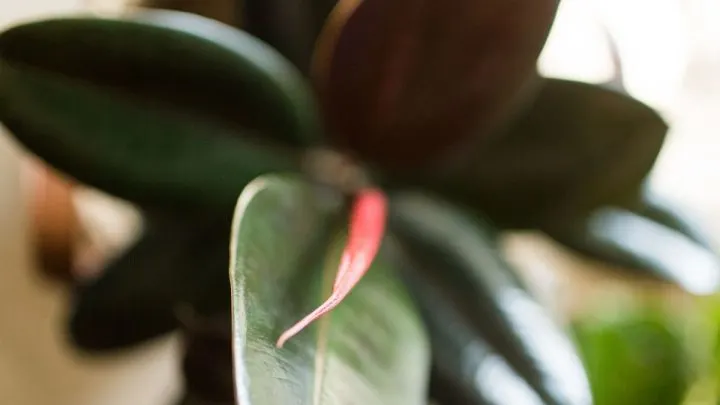In this text, you will learn everything you need to know about the most interesting ficus plant types. Ficus is a large family of genera with more than 1000 species used in the tropics and subtropics.
Most ficus species are ficus trees, but some are also shrubs or lianas. Many species are epiphytes, meaning they grow on other plants and get their nutrients and moisture from the air and rainwater.
In this article, you will learn which ficus plants are most known and which are ideal for your home. You will also find tips and tricks for the ficus tree plant care, watering, fertilizing, and cutting for all types of ficus.
How Many Ficus Plant Types Are There?
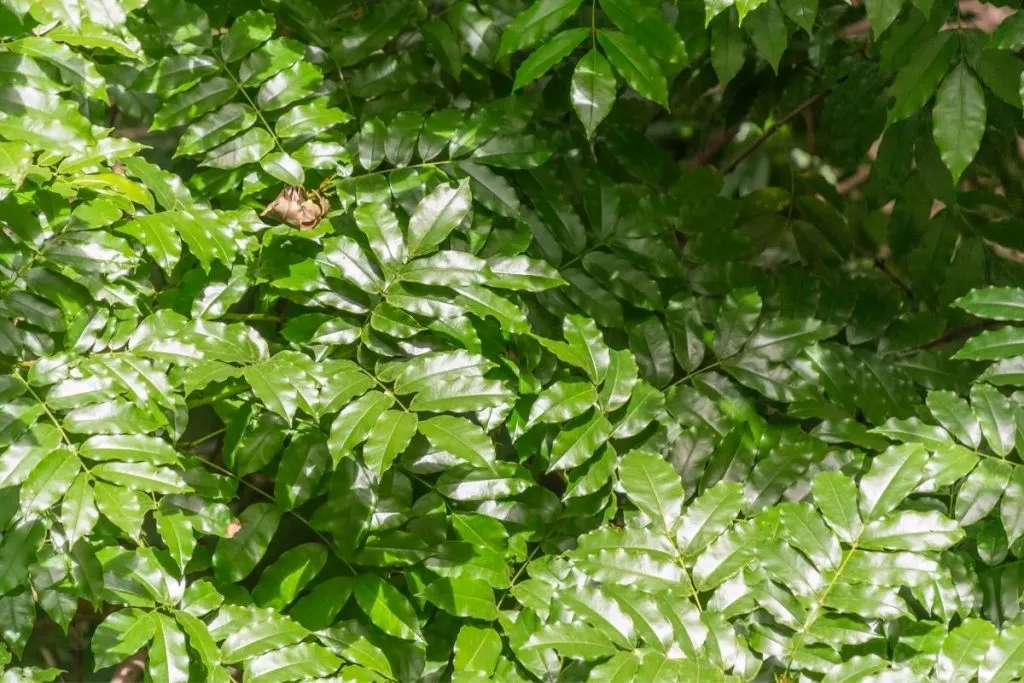
Ficus plants have numerous varieties. These plants grow in tropical regions and can be kept as a houseplant, or ornamental plants.
Due to their number, it is possible to divide them in different ways into different groups. For example indoor ficus trees, and outdoor ficus plant tree species. Then types of ficus trees which like bright light, direct sunlight, indirect sunlight, direct sun, and so on.
Most types of ficus are evergreen and can grow up to 50 feet tall. They have large, oval leaves. That can come in a variety of colors. But mostly they are green leaves or dark green leaves. The flowers of the ficus species are small and yellow.
Ficus plant types can generally be divided into two groups:
- Ficus Benjamina, and
The Ficus plants differ in size, shape, and color of the leaves and fruits. Most species are evergreen, but some are deciduous (leaves falling in autumn). The leaves are either simple or pinnate. The fruit is a berry.
Is Ficus A House Plant?
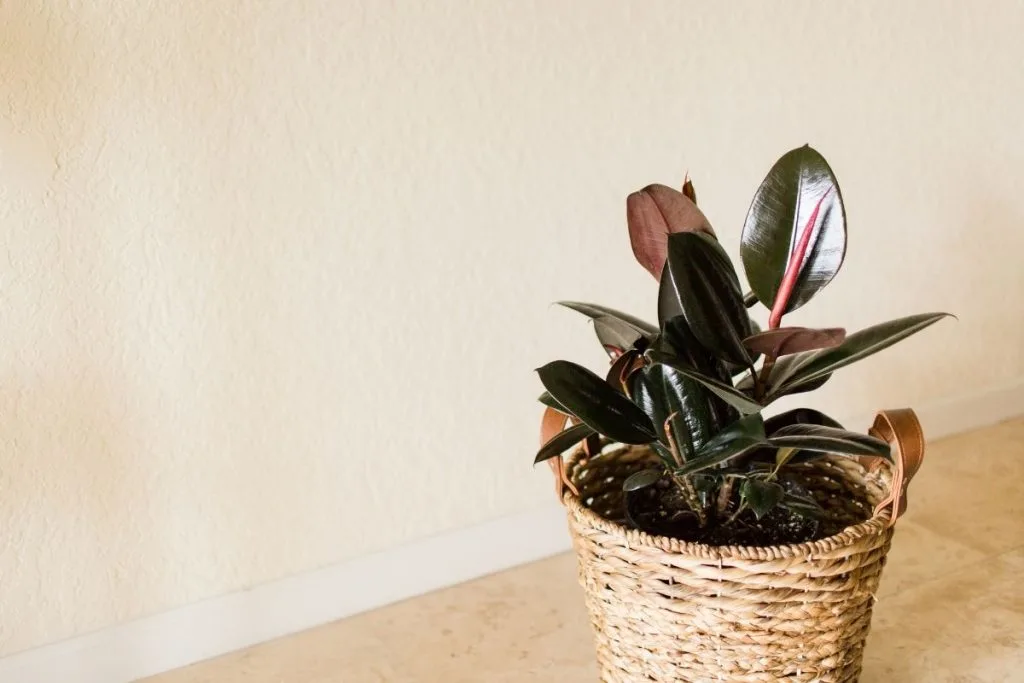
Most types of ficus, which you can find in rooms as house plants are from tropic or subtropical regions and need to have high air humidity and high temperatures.
Ficus trees and ficus plants are suitable as ornamental plants. To make your living space a green oasis with their green foliage. But you have to keep in mind that the ficus trees, as well as the ficus plants, need different lighting options to thrive.
Most indoor ficus plants need to have a minimum of four hours of direct sunlight every day, in order not to have their leaves turn yellow or even fall off.
On the other hand, there are some indoor ficus plants that can grow in closed rooms without direct sunlight.
Ficus Plant Types That Can Be Cultivated As Houseplants
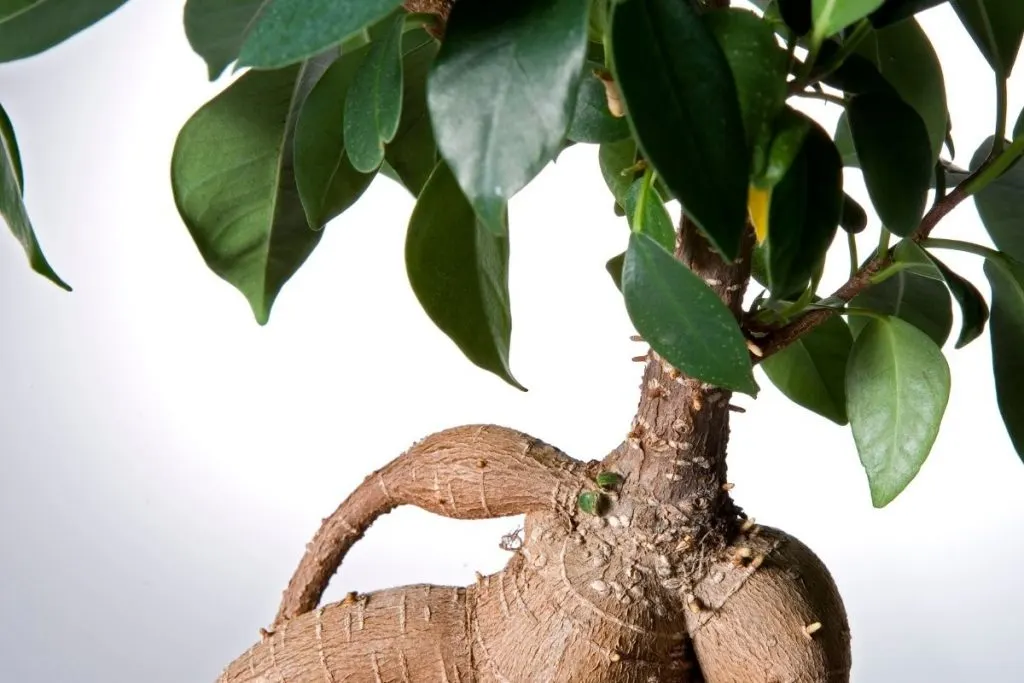
Ficus trees are popular houseplants because they are easy to care for and can grow in many different conditions.
There are many types of ficus plants that can be cultivated as houseplants. The most common species are Weeping Fig (Ficus Benjamina), Ficus Elastica, Ficus Pumila (Climbing ficus), and Ficus Retusa.
All of these ficus species from the ficus genus can grow indoor as houseplants as long as they get plenty of direct sunlight and moisture. They are all easy to care for and tolerate a range of temperatures.
So, if you are looking for a great evergreen plant for the pot, tub, or hanging baskets, you can for sure find the right ficus here.
Ficus Plant Types: List With Names And Description

In this part of the article, we will explain the best ficus types in our opinion. Each type is special and beautiful in its own way and we will convince you of that.
But before you decide to buy a ficus for your home or garden, do some research about this plant. And for that matter every other plant that you want to buy before you actually go and buy it.
Each variety requires different attention and care. Either way, this article will provide you with enough information you need to know about each type of ficus to make the right decision for you.
Ficus Deltoidea – Mistletoe Fig
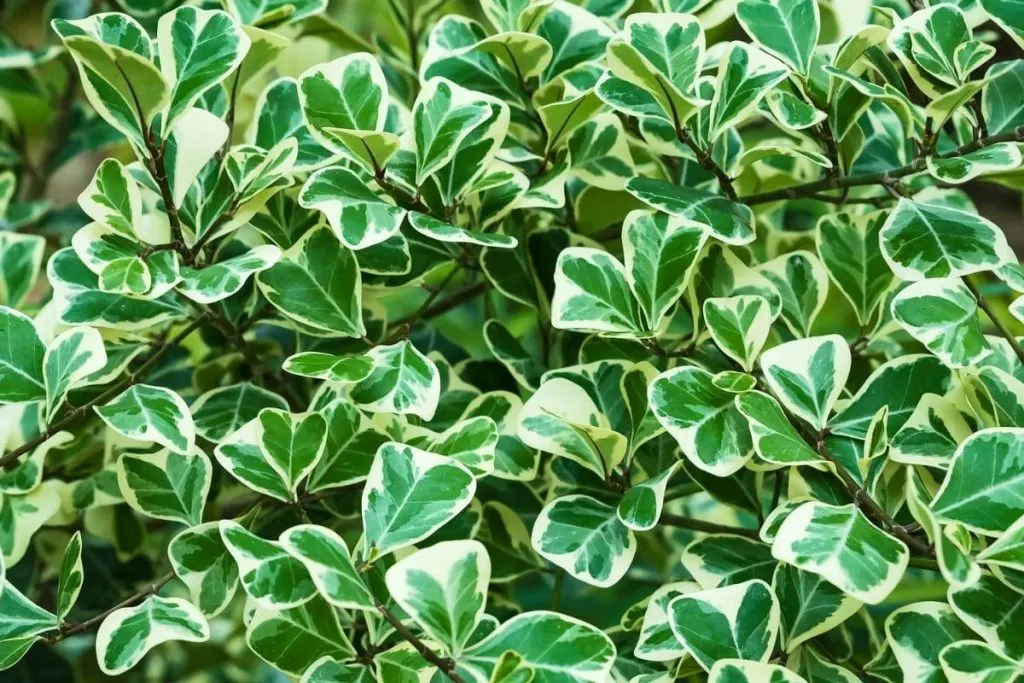
Ficus deltoidea or the Mistletoe fig is a fig variety, which natural habitat is rainforests and therefore tropical regions.
It is a hemiepiphyte, which means that this fig begins its life as a parasite on another tree, before evolving into a self-sustaining plant.
This ficus sort is unusual because it has two types of flowers: male and female. The female flowers are small and green, while the male flowers are pink and spherical.
The fruits of this plant are edible. Rainforest animals often eat them. The Mistletoe fig, Ficus deltoidea is a tropical plant, so it grows in a warm, humid environment.
Mistletoe Fig Care
It needs bright indirect sunlight but do not expose it to direct sun. Fertilize the ficus plant every two months with a balanced fertilizer.
Water the plant regularly and make sure the soil is moist but not wet. Rotate the plant every two years.
Ficus Sagittata
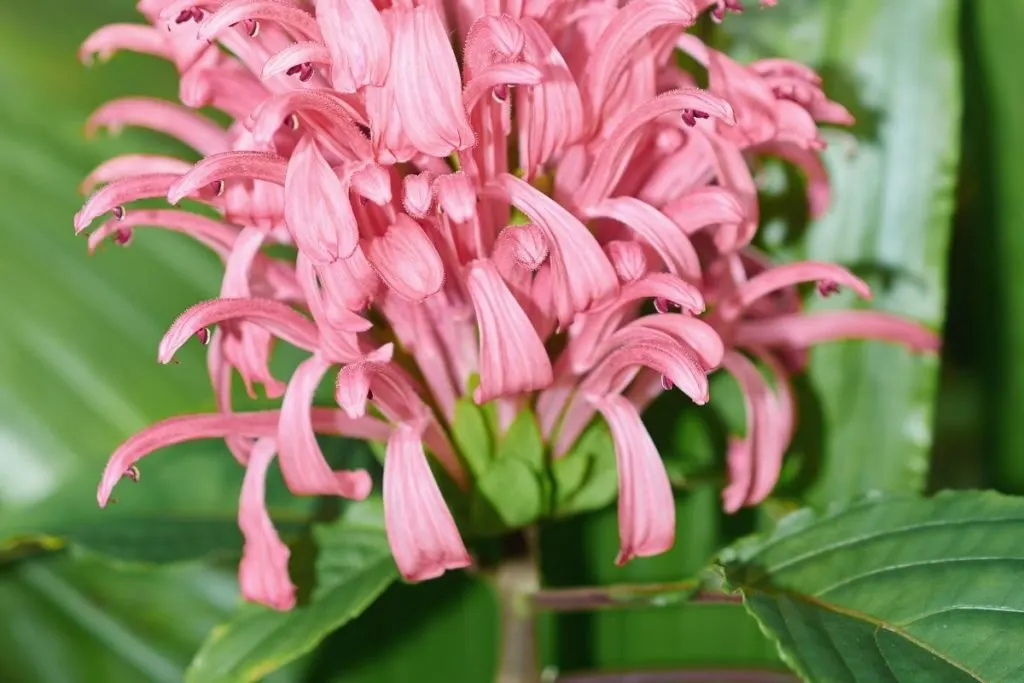
Ficus sagittata are tropical plants. Native to parts of Africa and Asia. It is a small tree or shrub that usually grows 15-30 feet tall.
Ficus sagittata is an evergreen plant that bears small, green fruits. In horticulture, it is used for its attractive foliage and easy care.
Care Of Ficus Sagittata
To take care of Ficus sagittata, you should water it regularly and fertilize it twice a month.
Make sure the plant gets plenty of sunlight, but avoid placing it in direct sun during the hottest part of the day.
Prune the plant occasionally to maintain its shape.
Ficus Religiosa – Sacred Fig Tree
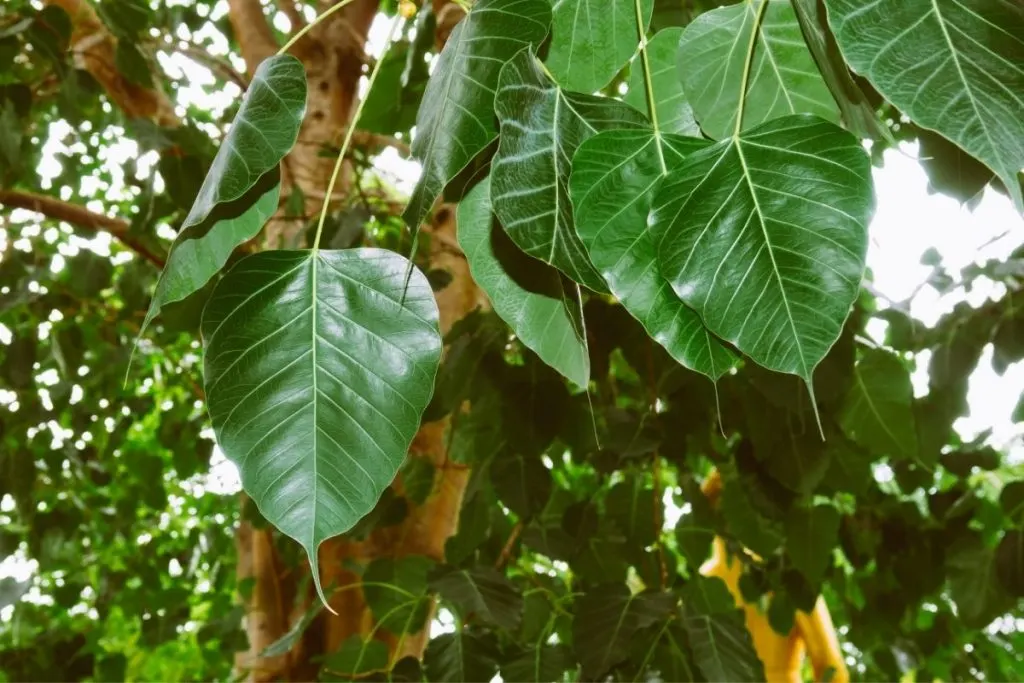
Ficus religiosa also known as sacred fig is a ficus tree. It is native to India and Sri Lanka but has become naturalized in many other regions.
These types of ficus trees are considered sacred by Hindus, Buddhists, and Jains.
The juice of this ficus tree is used in traditional Indian medicine to treat diabetes. Tea is also prepared from the leaves, which is said to stimulate digestion and blood circulation.
The fruits of the Ficus religiosa tree are edible and are eaten raw or cooked. The fruit is rich in fiber and vitamin C.
Sacred Fig Tree Care
Ficus religiosas need moderately bright to bright lighting. They can be placed in an east, west, or south-facing window.
They prefer slightly moist but well-drained soil. Water when the top inch of soil feels dry.
Fertilize every two months from February to October with a balanced fertilizer. Prune the plant as needed to get the desired shape. Reduce watering and fertilizing in winter. Allow the plant to go dormant.
Ficus Lyrata – Fiddle Leaf Fig
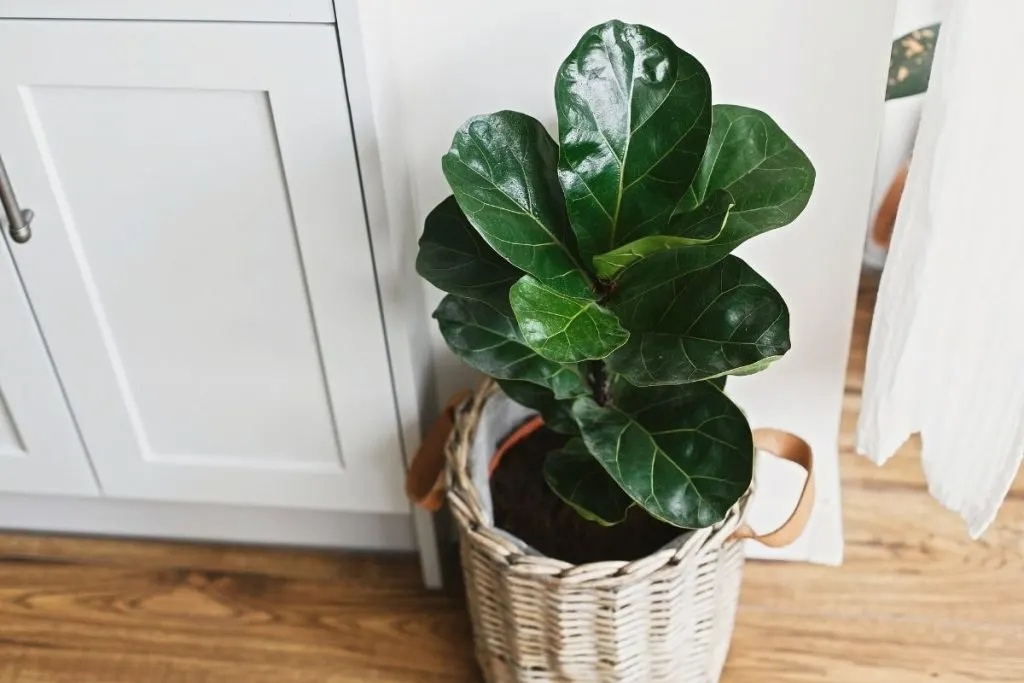
The Ficus Lyrata is a fiddle leaf fig tree found in Africa and Asia. It is a large fiddle leaf fig tree that grows up to 100 feet tall.
The leaves are dark green and broadly lanceolate, 3-7 inches long and 1-2 inches wide.
The fruit is an edible purple fig.
Ficus lyrata is a popular ornamental tree in tropical and subtropical gardens.
Care Of The Fiddle Leaf Fig Ficus Lyrata
The fiddle leaf fig tree is drought tolerant and grows well in full sun or partial shade. The ficus tree can be pruned into a hedge or used as an ornamental tree.
Ficus Lyrata can also grow as a houseplant, as an indoor ficus tree. The fiddle leaf fig needs a bright spot with some direct sun and high humidity.
When you are interested in the question: Fiddle leaf fig leaves drooping? Or some other fiddle leaf fig problems you can find the answer on our site.
Also, you can eat fruits from the fiddle leaf fig tree, or make them into jam or chutney. This is also a reason to grow these ficus trees.
Ficus Sycomorus – Sycamore Fig (Fig-Mulberry)

This ficus genus belongs to the mulberry family (Moraceae). The Sycomorus fig can grow into a large tree, up to 100 feet tall with a trunk of 3 feet in diameter. So it is one of the biggest types of ficus trees.
The large leaves of the ficus tree are 4 to 10 inches long and 2 to 6 inches wide. The leaves are lobed or unlobed, with the lobes arranged in pairs at the leaf margins.
Care Of This Ficus Tree
Ficus sycomorus is an excellent houseplant. It is easy to care for and very tolerant of a wide range of conditions. The tree can be kept in a pot or grown into a large indoor tree.
Ficus sycomorus figs are edible and have a sweet, fruity flavor. They can be eaten fresh or used in jams and desserts.
Outdoor ficus trees
Ficus sycomorus is a ficus tree outdoors as an ornamental tree. Because of its size and attractive appearance, it is often used in parks and gardens. The tree also tolerates dry conditions and does not require much care.
Ficus Microcarpa – Ginseng
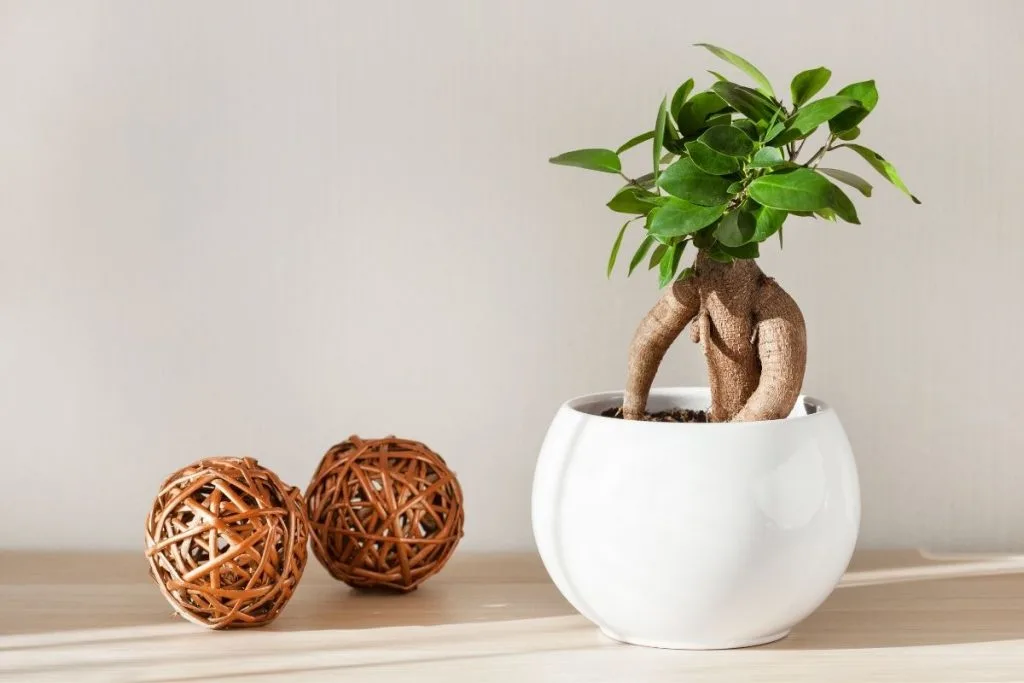
The Ficus microcarpa tree is also known as the ginseng tree. It is a small to medium-sized tree that typically reaches 65 to 100 feet tall, although it can grow taller in tropical climates.
The bark is smooth and gray and the leaves are dark green and glossy. The fruit is a small, round berry that is red when ripe.
The juice of the Ficus microcarpa tree has been used medicinally in Asia for centuries.
The roots of the tree are particularly valued for their medicinal properties. Ginseng root extract is widely used as a natural remedy for stress, anxiety, and fatigue.
Indoor Ficus Trees Care
Ficus microcarpa: Ginseng is a tropical plant and should not grow indoors in moderate climates. It can be grown as a houseplant in tropical climates.
This indoor ficus plants need a lot of sunlight and should be in a location where they receive at least six hours of direct sunlight a day.
It also needs moderate humidity, so be sure to mist the green foliage regularly or place the plant on a tray of damp pebbles.
Ficus Benghalensis – Banyan Tree

A large and imposing tree native to India. Ficus benghalensis is one of the tallest trees in the world, reaching a height of up to 100 feet.
The banyan is an important tree in Hinduism and is often considered sacred. The tree is also known as the “Tree of Life” due to its long lifespan and ability to house large numbers of animals and birds.
The ficus benghalensis is a huge tree with a massive trunk and an extensive root system (root ball).
The banyan treetop can provide shelter for hundreds of people, and the tree itself can live for over 500 years.
Care Of Ficus Trees
The banyan makes an excellent houseplant and can be grown in a pot or container. It requires moderate amounts of sunlight and should be watered regularly.
The banyan is a slow-growing tree so it will take some time before it reaches its full size. However, due to its impressive size and eye-catching appearance, the banyan tree is a popular choice for indoor greenery.
Ficus Carica – The Fig
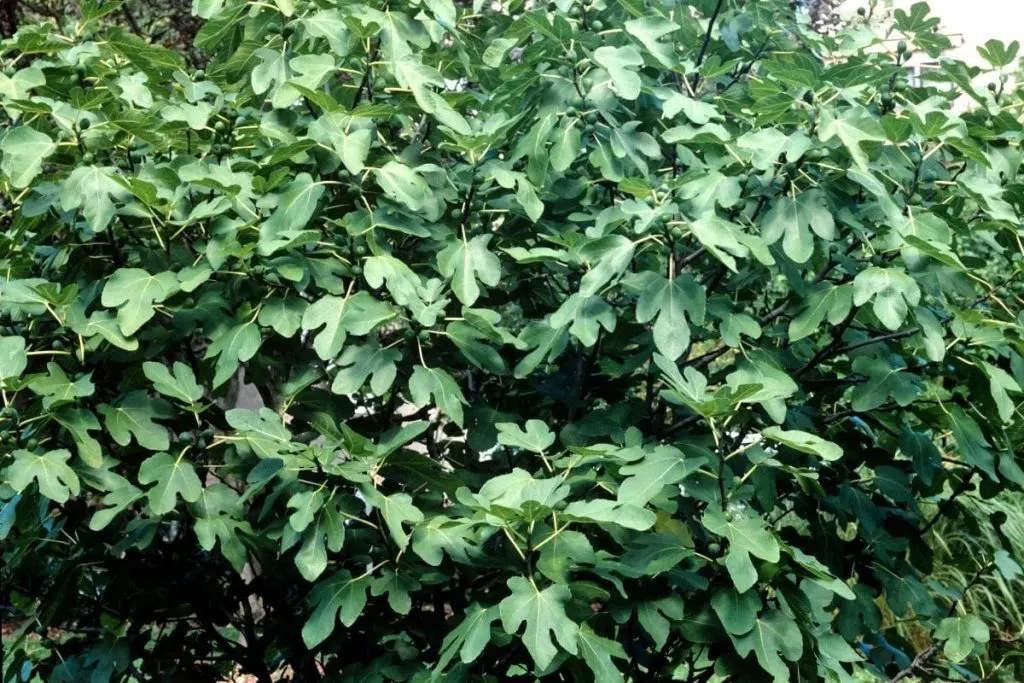
Ficus carica is a species of flowering plant in the mulberry family (Moraceae). It is also widely grown in the Mediterranean region, including Southern Europe and North Africa.
The fruits of the Ficus carica have been prized for their sweetness and nutritional value since ancient times. The ripe fruits are often eaten fresh or made into preserves or jams.
The leaves of the Ficus carica tree have also been used medicinally for centuries. The leaves can also be used externally to relieve discomfort.
Care Of This Fig
The Ficus carica is a fantastic houseplant because it is so easy to care for. If you’re lucky enough to have a ficus carica (the true fig tree) in your home, there are a few things you should know about caring for it.
This tree thrives in a warm, sunny environment. It thrives best when planted in moist soil and watered regularly. In winter, when temperatures drop below, you may need to water your fig tree less often.
Ficus carica is a fast-growing tree that can reach a height of 100 feet. To keep your fig tree small and manageable to grow indoors, you may need to prune it occasionally. The best time to prune a fig tree is in early spring before new growth begins.
Ficus Benjamina – Weeping Fig
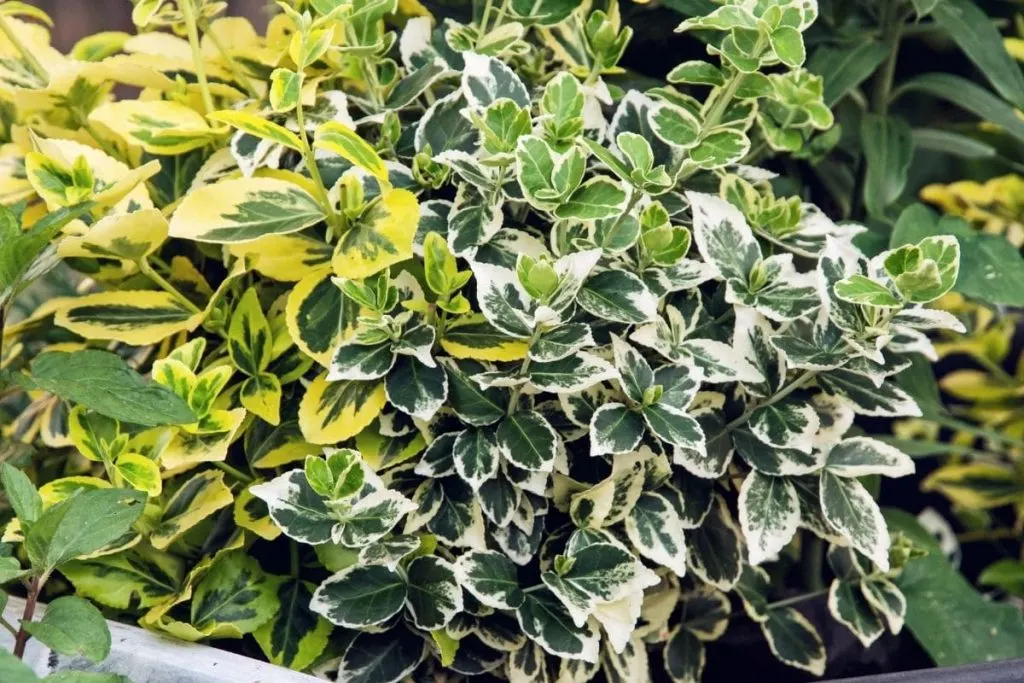
The weeping fig is a popular choice for an indoor houseplant. Ficus Benjamina is native to Australia and Southeast Asia.
The weeping fig is a beautiful plant known for its interesting green foliage. It’s a popular choice for homes and offices because it’s easy to care for and looks good anywhere.
It has broad, dark green leaves and can grow quite large, making it a popular soil plant.
The weeping fig is a hardy plant that will tolerate a wide range of conditions making it a good choice for anyone new to plants.
It thrives best in bright, indirect light and prefers moist, but not wet, soil.
The weeping fig is also one of the few non-toxic plants for cats. The little ones can easily nibble on the leaves.
Ficus Elastica – Rubber Tree

Ficus elastica, also known as the rubber tree, is another popular choice for indoor growing.
The rubber tree, commonly known as the gum tree, or rubber fig is a flowering plant in the mulberry family (Moraceae).
It is native to the Indian subcontinent and Southeast Asia. The rubber tree grows to a height of 100 – 130 feet and has a trunk with a diameter of up to 4 feet.
The green leaves are large, 4-12 inches wide and 8 inches to a foot long, and oblique at the base. The flowers are small, axillary, and unisexual.
The fruit is a small drupe, 0.4 to 0.8 inches in diameter, which ripens dark purple or red.
The rubber tree is important to crop. The milky juice extracted from the tree is used to make rubber products such as tires, gloves, and toys.
Ficus Elastica – Fig Trees Care
The rubber tree (Ficus elastica) is a popular houseplant that is easy to care for. Here are some tips on how to keep your ficus elastica healthy and happy:
- keep the soil moist but not wet,
- ensure moderate humidity,
- put the plant in a bright place, but not in direct sun,
- fertilize once a month with a balanced fertilizer, and
- repot the plant every 2-3 years, using a pot that is only slightly larger than the current pot.
Ficus Retusa – Ficus Bonsai Tree
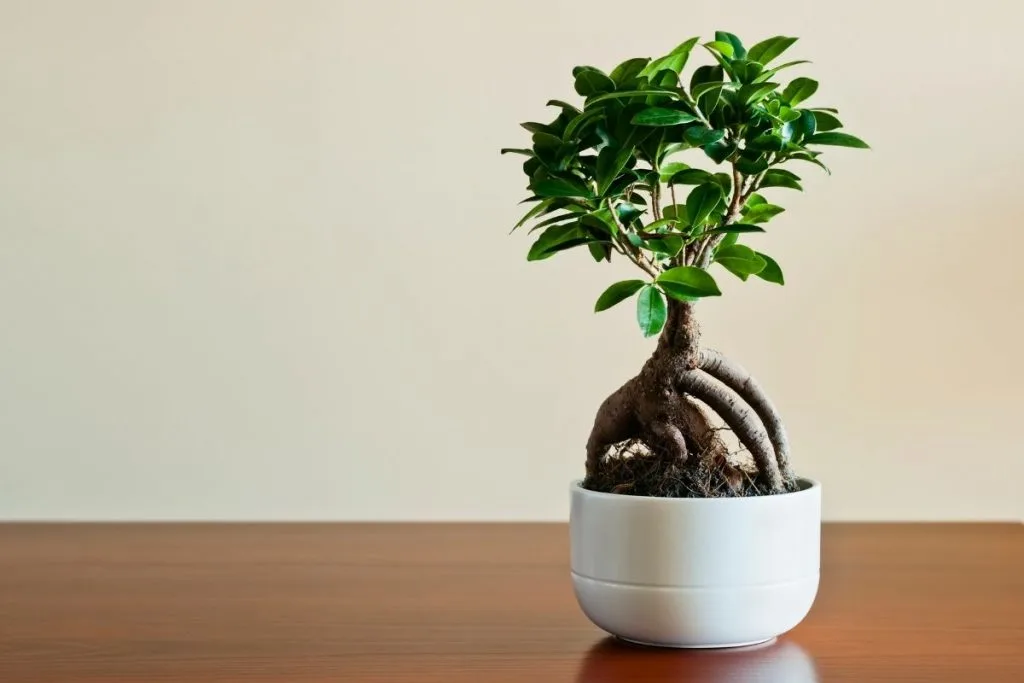
This tree is native to Malaysia. The tree can grow up to 100 feet tall and has a trunk diameter of up to 2 feet. But how long does a bonsai tree take to grow?
The leaves are elliptical in shape and have a glossy surface. The tree produces small, yellowish-white flowers that bloom in spring. The fruit of the Ficus Retusa is a small, red drupe containing a single seed.
The Ficus Retusa is an evergreen tree known for its dense foliage. The tree is excellent as a shade tree and can be used as a privacy hedge.
The Ficus Retusa is also popular as a bonsai plant. Bonsai is the Japanese art of growing miniature trees in pots.
Care Of This Ficus Retusa
The Ficus Retusa is a tropical tree that needs a warm, humid environment. The tree can be grown indoors in a pot or outdoors in a tropical climate.
The Ficus Retusa needs moist soil and should be watered regularly. The tree can be fertilized twice a month with a balanced fertilizer. The Ficus Retusa should be pruned regularly to maintain its shape.
How To Water A Ficus? How Often Do You Have To Water A Ficus?

There is no universal answer to this question because the amount of water your ficus needs depends on the climate, the type of soil, and the size of the plant.
In general, you should water your ficus when the top inch of soil feels dry. You can test this by sticking your finger in the ground. If the soil is wet, don’t water it yet. If the soil is dry, you should water it.
When watering your ficus, you should water it slowly and deeply to allow water to reach the roots. Also, make sure that the water drains out of the pot so that the roots do not stand in the water. If the roots are in the water, they can rot.
Ficus Plant Types: Where Is The Best Place For The Ficus?

The best place for the ficus houseplant is a bright room with indirect sunlight. It tolerates some direct sun, but too much sun will burn the leaves.
The plant also needs high humidity, so it is often kept in a terrarium or on a pebble tier.
The ficus does not like drafts, so it should not be placed near an air conditioner or heating duct. The plant prefers warm temperatures and should not fall below 65 degrees Fahrenheit.
This Is How Your Ficus Plant Types Stay Healthy!
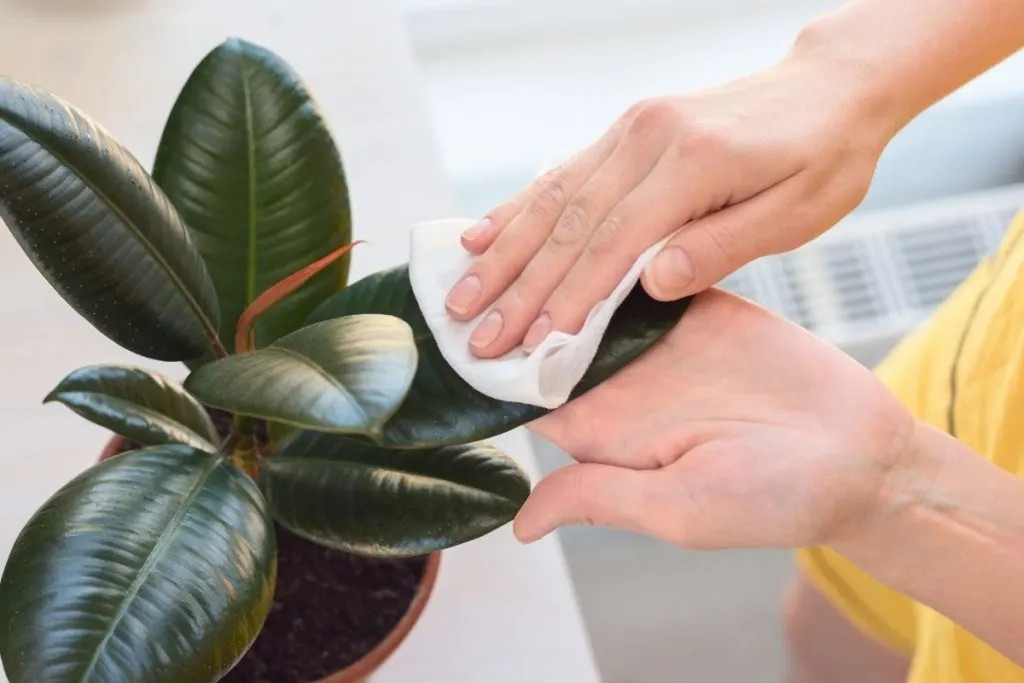
There are a few things you can do to keep your ficus healthy. For one thing, you need to make sure he gets enough water.
On the other hand, he must get enough light. Ficus plants need at least six hours of sunlight per day.
You should prune and replant your ficus every year. You can do this in spring or summer. To prune your ficus, you should cut off all dead leaves and branches. You can also shape the plant by cutting off long branches.
Ficus plants are beautiful and easy to care for. With a little care, they can thrive for years.
Ficus Plant Types: Are Ficus Trees Poisonous?
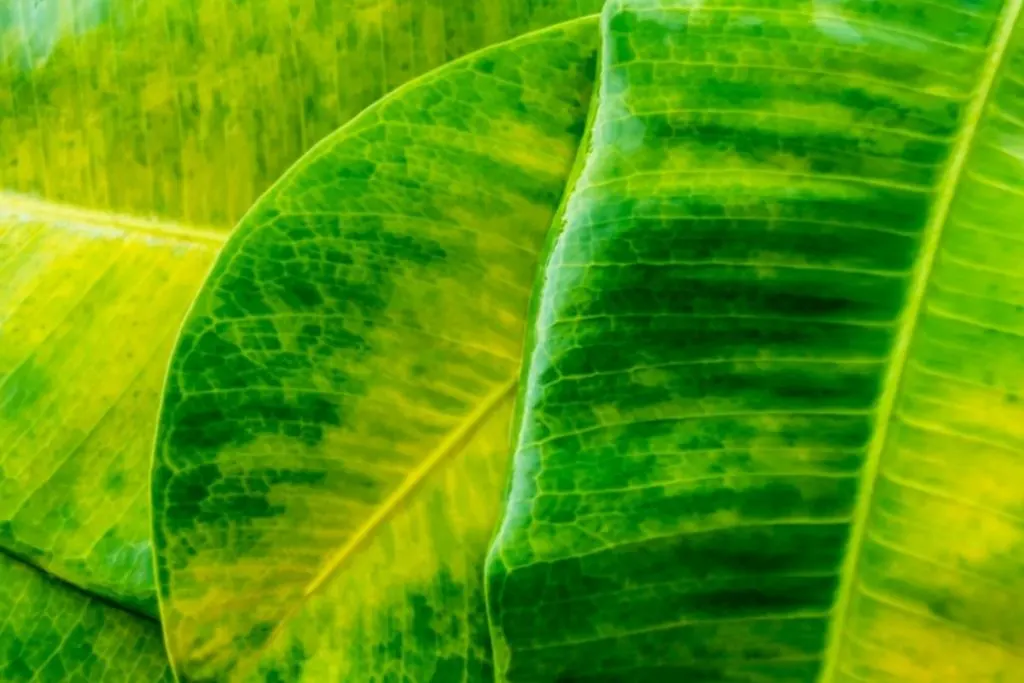
The ficus is not poisonous to humans or animals. While the ficus is not poisonous, it’s still best not to eat any part of the plant.
However, the juice of the ficus can cause skin and eye irritation. If the juice is swallowed, it can cause gastrointestinal problems.
If you suspect your pet has swallowed the juice of a ficus, contact your veterinarian immediately.


